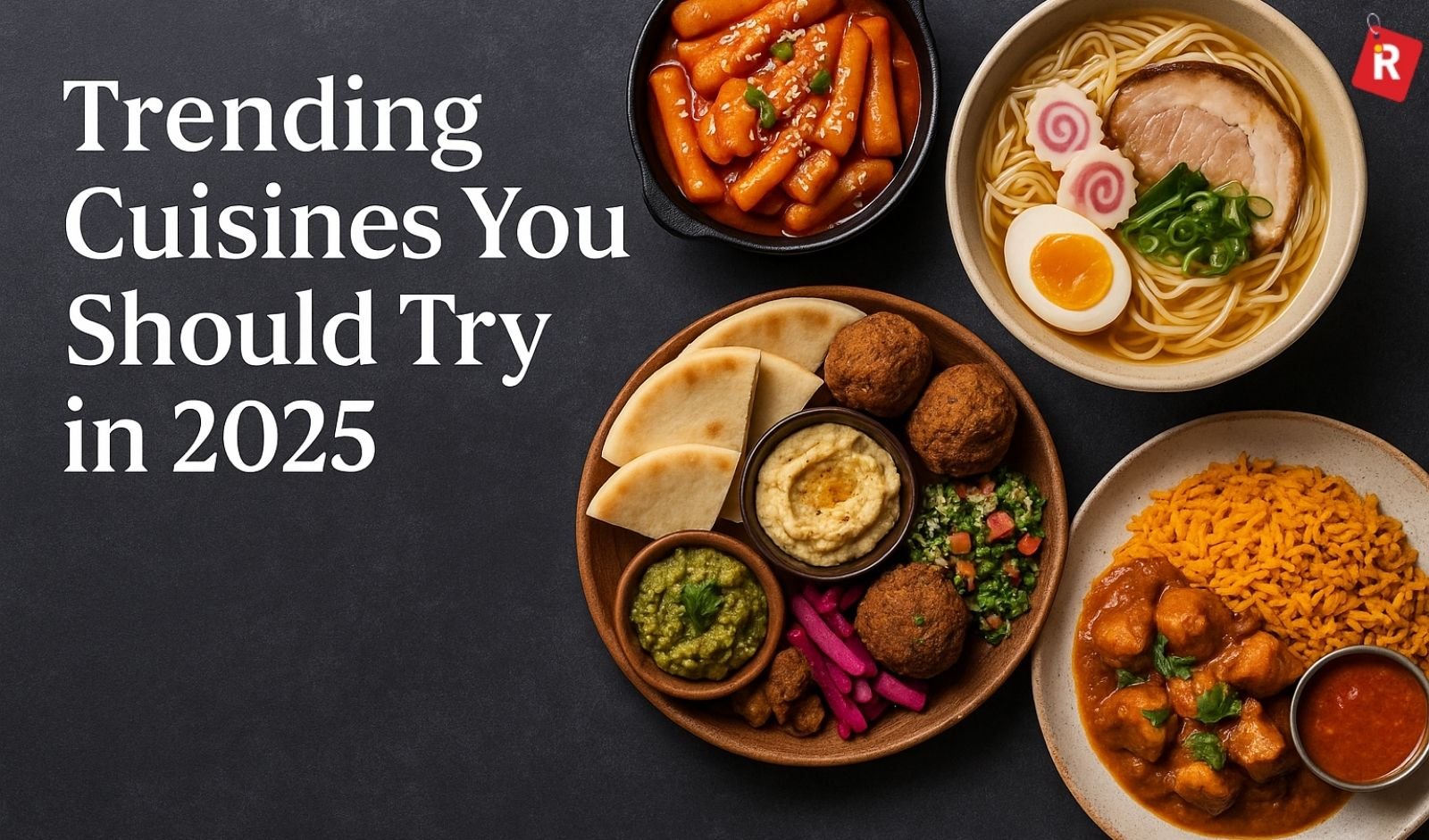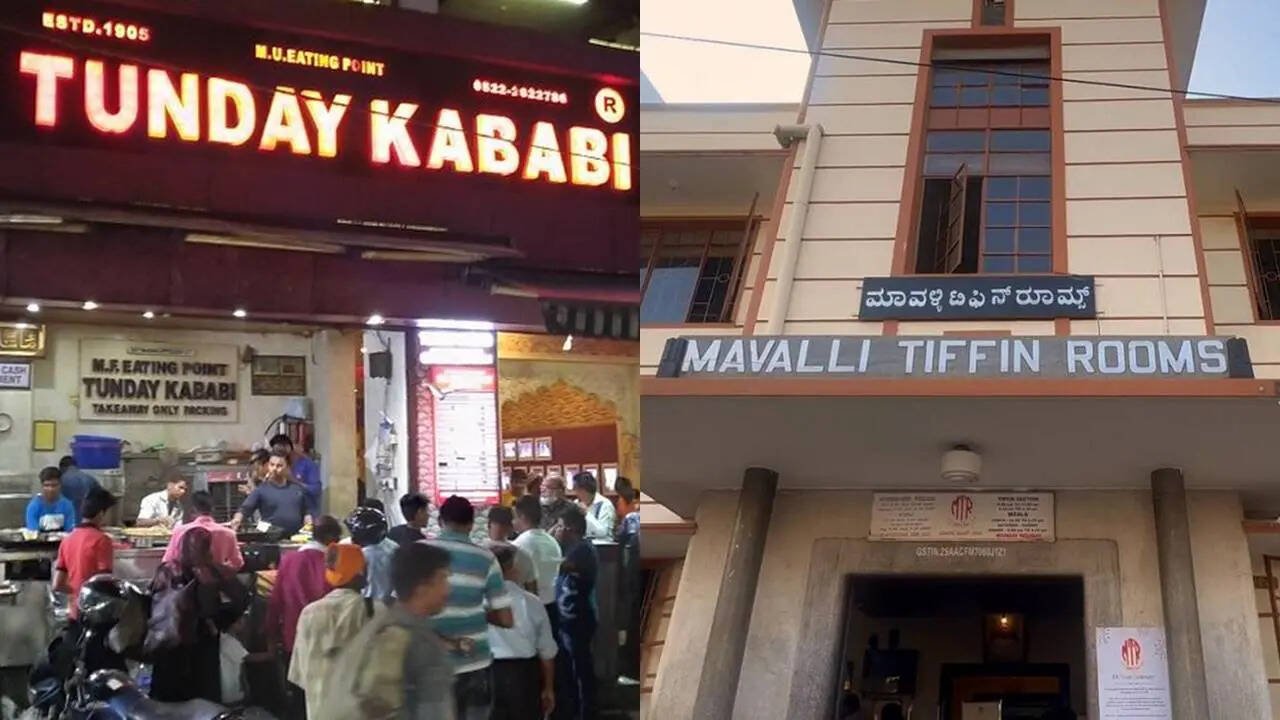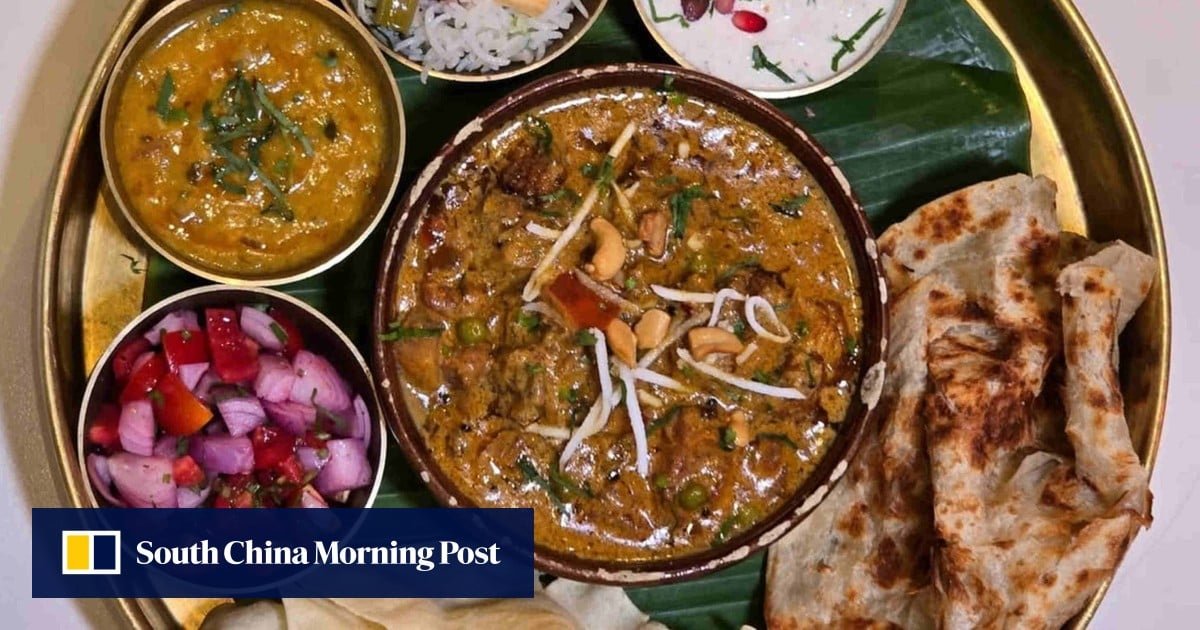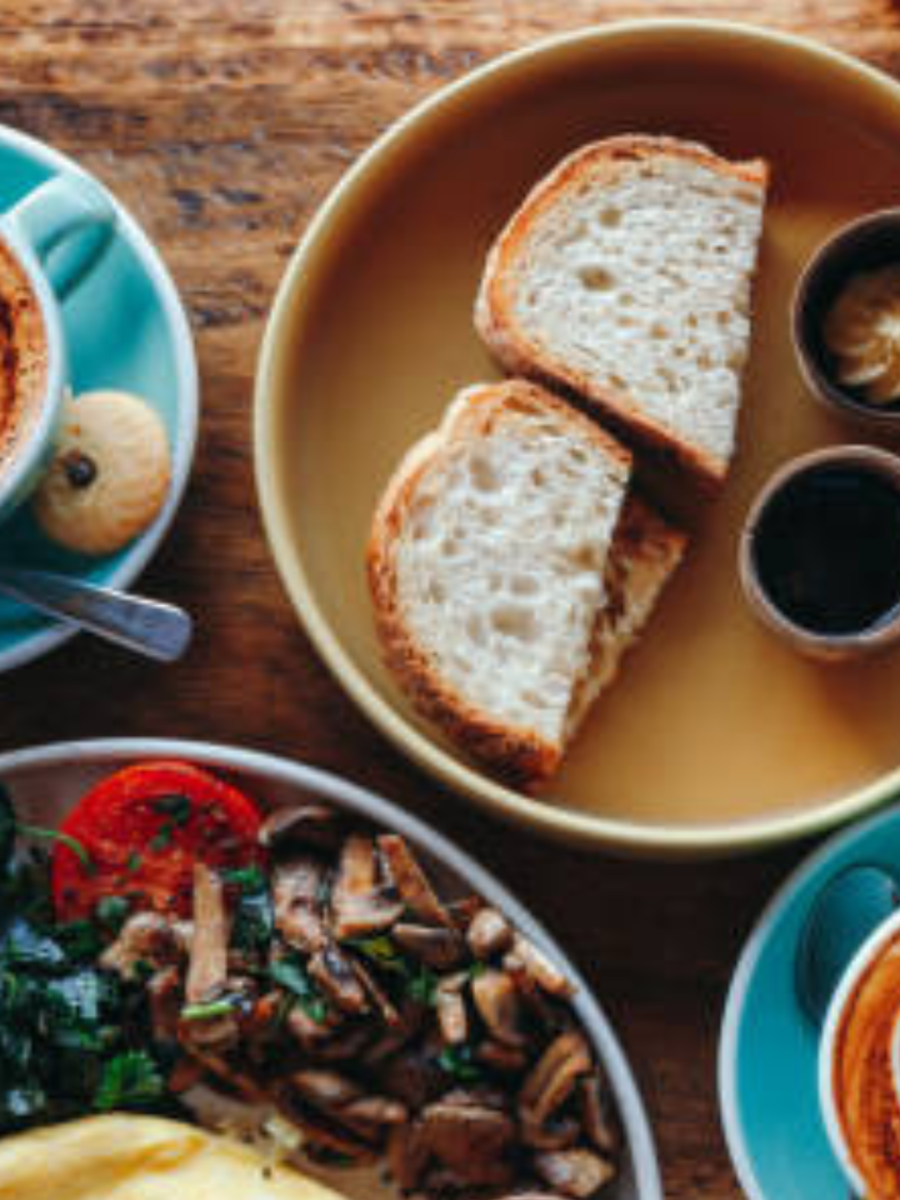Restaurants & Food
Trending Cuisines You Should Try in 2025

Your body needs the right fuel to stay strong, active, and healthy. Superfoods are nature’s power boosters, packed with essential nutrients that improve energy levels, strengthen immunity, and enhance overall well-being. These foods are rich in vitamins, minerals, and antioxidants, helping you stay fit, fight diseases, and feel great every day. The best part? Superfoods are easy to include in your meals. From boosting brain function with blueberries to improving heart health with salmon, these nutrient-rich foods offer numerous benefits. Spinach provides iron for energy, quinoa gives you plant-based protein, and chia seeds keep you full for longer. Almonds and Greek yogurt support digestion and muscle health, while turmeric fights inflammation naturally. Avocados provide healthy fats for glowing skin, and dark chocolate improves mood and heart function.
By adding these 10 superfoods to your diet, you can enjoy better health, higher energy, and a stronger body. Whether you blend them into smoothies, toss them in salads, or eat them as snacks, these foods will transform your diet and make you feel amazing. Start today and experience the power of these natural health boosters in your daily life!
Know more: 5 Bestselling Coffee Brands in India to Try Right Now
Top 6 Coconut Water Brands in India for a Refreshing Hydration Boost
1. Blueberries – The Tiny but Mighty Brain Boosters
Blueberries are one of the most powerful superfoods, packed with antioxidants that protect brain cells from damage. These small berries are rich in vitamin C, fiber, and flavonoids, which help improve memory and slow down cognitive decline. Regular consumption of blueberries has been linked to better brain function, reduced risk of heart disease, and lower cholesterol levels. The high fiber content supports digestion, while the vitamin C helps in collagen production, keeping your skin youthful. These berries also fight inflammation, which plays a key role in aging and chronic diseases.
Incorporating blueberries into your diet is easy. You can add them to smoothies, mix them into oatmeal, or enjoy them as a topping on yogurt. They also make a delicious and healthy snack when eaten fresh. If you want an energy-boosting mix, combine them with nuts for a nutritious trail mix that keeps you full and energized throughout the day.
How to Eat Them:
- Add to smoothies, oatmeal, or yogurt
- Eat fresh as a snack
- Mix with nuts for a power-packed trail mix
Read more: Tata’s Top 7 Food and Beverage Brands: A Legacy of Quality and Innovation
2. Spinach – Popeye Was Right!
Spinach is one of the most nutrient-dense leafy greens, packed with vitamins, minerals, and antioxidants. It is an excellent source of iron, which plays a crucial role in oxygen transport in the body. A lack of iron can lead to fatigue and weakness, making spinach an important food for energy levels. It is also rich in vitamin K, which supports bone health and helps in blood clotting. The antioxidants in spinach, such as lutein and zeaxanthin, improve eye health and protect against vision problems like macular degeneration.
This versatile green can be consumed in multiple ways. Blend it into smoothies for a nutrient boost, toss it into salads, or stir-fry it with garlic and olive oil for a tasty side dish. You can also add it to omelets for a quick and healthy breakfast. Spinach is a simple yet powerful way to strengthen your body and improve overall well-being.
How to Eat It:
- Blend into smoothies
- Add to salads or stir-fry
- Mix with eggs for a healthy omelet
Check More: 20 Best Makhana Benefits, Nutrition & Uses: The Ultimate Guide to Fox Nuts
3. Quinoa – The Protein-Packed Grain
Quinoa is a supergrain that is loaded with essential nutrients. It is one of the few plant-based sources of complete protein, meaning it contains all nine essential amino acids. This makes it a great choice for vegetarians and vegans looking to increase their protein intake. Quinoa is also high in fiber, which aids digestion, promotes gut health, and keeps you full for longer. Additionally, it has a low glycemic index, making it beneficial for blood sugar control.
Quinoa is easy to cook and can be used in a variety of dishes. It can replace rice in meals, be added to salads for extra texture, or be cooked with vegetables for a healthy and satisfying dish. Because of its versatility, quinoa is a great staple for those looking to maintain a balanced diet while ensuring they get enough essential nutrients for muscle growth, energy, and overall well-being.
How to Eat It:
- Use as a rice substitute
- Add to salads for extra protein
- Cook with vegetables for a healthy meal
Also Check: 10 Delicious Detox Drinks | Easy Detox Drinks for Summers
4. Avocado – The Creamy Goodness Your Body Loves
Avocados are a powerhouse of healthy fats, particularly monounsaturated fats, which help improve heart health and lower bad cholesterol levels. These creamy fruits are also loaded with fiber, making digestion smoother and promoting gut health. Avocados contain more potassium than bananas, which helps regulate blood pressure and reduce the risk of heart disease. The presence of antioxidants and vitamin E makes them great for skin health, reducing wrinkles and giving a natural glow.
You can eat avocados in multiple ways. Spread them on toast for a quick breakfast, blend them into smoothies for a creamy texture, or add them to salads for extra flavor and nutrition. Guacamole, made with mashed avocados, lime juice, and spices, is a delicious way to enjoy this superfood. Whether eaten alone or as part of a meal, avocados are a delicious and nutritious addition to your diet.
How to Eat It:
- Spread on toast
- Add to salads and smoothies
- Make guacamole for a tasty dip
Read More: Is Frozen Food a Health Hero or Hidden Villain? The Shocking Truth Revealed!
A Guide to Different Breads and Their Nutritional Value
5. Chia Seeds – The Tiny Seeds with Super Powers
Chia seeds are small but packed with powerful nutrients. They are one of the best plant-based sources of omega-3 fatty acids, which help reduce inflammation and support heart health. Their high fiber content aids digestion, keeps you full for longer, and helps in weight management. When mixed with liquid, chia seeds expand and form a gel-like texture, which slows down digestion and provides lasting energy.
There are several ways to enjoy chia seeds. You can make chia pudding by soaking them in almond milk overnight, mix them into smoothies, or sprinkle them over oatmeal and yogurt. Adding them to salads provides a subtle crunch and an extra nutrient boost. Since chia seeds are tasteless, they can be incorporated into almost any meal, making them a convenient and highly beneficial addition to your diet.
How to Eat Them:
- Make chia pudding with almond milk
- Add to smoothies, oatmeal, or yogurt
- Sprinkle over salads for a crunchy boost
6. Turmeric – The Golden Spice of Life
Turmeric has been a staple in Indian households for centuries due to its powerful healing properties. Its key ingredient, curcumin, is known for its strong anti-inflammatory and antioxidant benefits. Regular consumption of turmeric helps reduce joint pain, supports brain function, and strengthens the immune system. It also aids in digestion and promotes liver health by detoxifying the body.
The best way to consume turmeric is by adding it to warm milk to make golden milk. You can also mix it into curries, soups, or teas. To enhance absorption, turmeric should be consumed with black pepper, which increases curcumin absorption in the body. Including turmeric in your diet is an easy and natural way to fight inflammation and improve overall health.
How to Eat It:
- Mix into warm milk for golden milk
- Add to curries and soups
- Take with black pepper to boost absorption
7. Almonds – The Snack That Keeps You Supercharged
Almonds are an excellent source of vitamin E, healthy fats, and protein. They help boost brain function, improve memory, and keep your skin healthy. The healthy fats in almonds support heart health by reducing bad cholesterol levels. Their high protein and fiber content also make them a great snack for sustained energy and satiety.
Almonds can be eaten raw as a snack, blended into smoothies, or turned into almond butter for a nutritious spread. Soaking almonds overnight enhances their nutrient absorption and makes them easier to digest. Adding almonds to your diet is a smart way to improve brain health, boost energy levels, and maintain overall well-being.
How to Eat Them:
- Eat a handful as a snack
- Blend into smoothies
- Use almond butter on toast
8. Greek Yogurt – The Creamy Gut-Friendly Delight
Greek yogurt is packed with probiotics, which support gut health and digestion. It is also a rich source of protein, making it ideal for muscle building and weight management. The calcium in Greek yogurt strengthens bones, while its probiotics help balance gut bacteria, boosting immunity and digestion.
You can enjoy Greek yogurt in a breakfast parfait with fresh fruits, use it as a base for smoothies, or mix it with honey and nuts for a tasty snack. Since it is low in sugar and high in protein, it is a great alternative to regular yogurt and an easy way to improve digestive health while keeping you full and energized.
How to Eat It:
- Enjoy as a breakfast parfait with berries
- Use as a base for smoothies
- Mix with honey and nuts for a tasty dessert
9. Dark Chocolate – The Sweet Superfood You Deserve
Dark chocolate with at least 70% cocoa is rich in antioxidants that protect the heart and brain. It contains flavonoids that improve blood circulation, lower blood pressure, and reduce stress. The magnesium in dark chocolate helps with relaxation and enhances mood.
To enjoy dark chocolate’s benefits, eat a small piece daily. You can also add cocoa powder to smoothies or sprinkle it over yogurt and oatmeal. Choosing high-quality dark chocolate with minimal added sugar ensures you get the maximum health benefits without unnecessary additives.
How to Eat It:
- Have a small piece daily
- Add cocoa powder to smoothies
- Use as a topping for oatmeal or yogurt
10. Salmon – The Omega-3 King of the Sea
Salmon is one of the best sources of omega-3 fatty acids, which are essential for brain and heart health. These healthy fats help reduce inflammation, improve cognitive function, and promote glowing skin. Salmon is also high in protein, making it great for muscle repair and overall energy levels.
You can enjoy salmon by grilling it with herbs and lemon, adding it to salads, or using it in sushi or wraps. Eating salmon regularly provides essential nutrients that keep your body strong, healthy, and full of energy.
How to Eat It:
- Grill with herbs and lemon
- Add to salads or rice bowls
- Use in sushi or wraps
Bonus: Superfood Combos for Extra Power
Certain superfoods work even better when paired together. Try these powerful combos:
- Blueberries + Greek Yogurt – A tasty snack loaded with antioxidants and probiotics
- Spinach + Almonds – A vitamin-rich combo for strong bones and energy
- Avocado + Dark Chocolate – A creamy, healthy dessert
Eat Like a Superhero, Feel Like a Superstar
Adding these 10 superfoods to your diet can improve your energy, brain function, and overall health. They are easy to include in meals and offer long-term benefits. Start with one or two superfoods and gradually add more to your diet. Whether you are looking for better digestion, glowing skin, or a stronger immune system, these superfoods have got you covered.
Restaurants & Food
5 Restaurants From India’s Pre-Independence Era That Must Be On Your Bucket List | Food

Iconic Pre-Independence Indian Restaurants Still Thriving in 2025
In a country where recipes are often handed down through generations with the precision of royal heirlooms, there exists a rare breed of restaurants that are not only feeding people but also serving up history – one plate at a time. Long before Instagram reels made food ‘viral’ and before Michelin stars began dictating taste, a few humble yet iconic establishments across India quietly began laying the foundations of what we now call the country’s culinary culture.
These restaurants have survived colonial rule, Partition, wars, food shortages, and fads like “zero oil” cooking. They’ve seen customers arrive on bullock carts, Ambassadors, and Ubers. Their menus haven’t changed much – and that’s precisely the point. To step into one of these is to step into a time capsule – where recipes are sacred, the décor proudly outdated, and every bite comes loaded with stories.
So this Independence Day, if you’re up for some edible nostalgia, here are five pre-1947 restaurants across India that deserve a spot on your bucket list – not just for the food, but for the legacy they carry.
1. Indian Coffee House, Kolkata
Founded: 1876 (Renamed in 1942)
Tucked into the eternally bustling College Street of Kolkata, the Indian Coffee House is less of a restaurant and more of a revolution. Originally set up as Albert Hall during the British Raj, the place transformed into Indian Coffee House in 1942 – and soon became the favourite adda (hangout) spot for intellectuals, poets, professors, and political revolutionaries.
The likes of Satyajit Ray, Amartya Sen, and Subhas Chandra Bose are said to have frequented this smoke-stained, high-ceilinged hall, where the sound of ideological debates was once louder than the clatter of plates.
Today, it still serves simple filter coffee, mutton cutlets, and that distinctive old-school charm. The waiters wear colonial-style uniforms, the walls are soaked in nostalgia, and the service? As delightfully slow as ever – but only because they want you to linger, not leave.
Fun Fact: The coffee here costs under ₹50, and it’s served with a side of political discussion on most tables.
2. Mavalli Tiffin Room (MTR), Bangalore
Founded: 1924
In the heart of Bengaluru’s Lalbagh Road lies a culinary institution that’s been dishing out comfort and consistency for over a hundred years. MTR is where you go not just to eat, but to feel hugged by food. Their masala dosas, crisp on the outside and bursting with spiced potato filling inside, are arguably among the finest in the country.
But the most endearing tale from MTR’s history comes from wartime scarcity. When rice became a luxury during World War II, the kitchen innovated and birthed the now-legendary rava idli – a fluffy steamed semolina cake that’s become a South Indian staple.
Clean, vegetarian, and famously punctual in its service, MTR today operates several outlets, but the original one retains its earthy charm and stainless-steel plates.
Fun Fact: The MTR kitchen runs on a clockwork system – they even have a time chart for dosa batter fermentation.
3. Britannia & Co., Mumbai
Founded: 1923
Step into Britannia & Co. in Ballard Estate, and you’ll feel like you’ve wandered into a Wes Anderson film set – pastel walls, rickety chairs, ancient cash registers, and a portrait of Queen Elizabeth gazing down from the wall. But the real royalty here is the food.
Run by the Kohinoor family, this Parsi restaurant is best known for its Berry Pulao, a fragrant rice dish adorned with barberries imported from Iran, cashew nuts, and tender mutton or chicken. It’s a recipe created by the matriarch, and the restaurant continues to follow it religiously.
The late Boman Kohinoor, the endearing patriarch who would personally greet guests and proudly flash a letter from the Queen, is still fondly remembered by loyalists. The menu also includes classic Parsi dishes like Sali Boti, Dhansak, and caramel custard.
Fun Fact: Boman Kohinoor was such a fan of the British monarchy that he campaigned for years to meet Prince William and Kate Middleton – and finally did in 2016.
4. Tunday Kababi, Lucknow
Founded: 1905
The story of Tunday Kababi is the stuff of culinary folklore. Haji Murad Ali, the one-armed kabab genius who started it all, was nicknamed ‘Tunday’ due to his physical disability – and the name stuck. But it’s the food that’s made the legend immortal.
The original shop in Aminabad continues to sell the iconic Galouti Kebab, a dish said to have been created for a toothless nawab who still craved meat. The kebabs are made using over 100 spices, minced finely and cooked on a tawa until they melt upon touching your tongue.
Tunday’s menu today also features Shami Kebabs, Biryani, and Sheermal – all rooted in the rich Awadhi culinary tradition. Though several offshoots have cropped up across the city, purists still swear by the flavour of the original location.
Fun Fact: The original Galouti Kebab recipe reportedly contains over 160 ingredients, though the exact list remains a closely guarded secret.
5. Karim’s, Delhi
Founded: 1913
Right in the shadow of Delhi’s Jama Masjid lies one of India’s most famous culinary legacies – Karim’s. Founded by Haji Karimuddin, a royal cook’s descendant, the restaurant began as a small eatery to serve those attending the mosque’s Eid prayers.
More than a century later, Karim’s is synonymous with Mughlai cuisine – rich, slow-cooked, unapologetically indulgent. Their Mutton Korma, Nihari, Seekh Kebabs, and Roghan Josh are not just meals – they are feasts that taste of history and tradition.
The ambience might be modest, but the taste remains royal. While newer outlets have sprouted across Delhi and even beyond, nothing beats the smoky charm and cramped quarters of the original location near Gate No.1 of Jama Masjid.
Fun Fact: During Partition, Haji Karimuddin reportedly fled to Meerut, only to return a few years later and rebuild the restaurant from scratch – brick by brick, spice by spice.
A Culinary Walk Through Time
In an era where pop-up eateries, QR-coded menus, and molecular gastronomy rule the roost, these age-old restaurants are reminders of a simpler, richer time. They don’t need reinvention – they are the tradition.
So, if you find yourself planning a trip across India and wondering where to eat, ditch the algorithms and follow the aromas of history instead. You’ll not only savour unforgettable dishes but also taste a bit of India’s past, served hot and with pride.
Restaurants & Food
Street food, sushi, Indian: favourite Hong Kong restaurants of a fermentation expert

Fermentation enthusiast Tommy Leung is the founder of HakkoBako, a food tech start-up that builds fermentation chambers for chefs and mixologists. He also runs Mealthy, a meal prep service in Hong Kong. He spoke to Andrew Sun.
My dad went from Hong Kong to Sweden in the 1970s and opened Chinese restaurants there. I am blessed to have been immersed not only in Chinese food culture but also Swedish.
I am a big fan of the city’s modern Indian restaurants, especially their super-thick and creamy curries. Two favourites are Tagline (Shop G02-G04, G18-G22, Empire Centre, 68 Mody Road, Tsim Sha Tsui. Tel: 2329 3311) and Bengal Brothers (Shop D, Man Hee Mansion, 6 Johnston Road, Wan Chai. Tel: 9245 8774), especially for their Chettinad-style lamb curry. Somehow, these places pack twice or three times more flavour and richness, and I have no idea how they do it.
Restaurants & Food
10 international dishes that are ruling Indian restaurants right now

Korean bibimbap goes Indian
Bibimbap, a mixed rice bowl with veggies, protein, and chilli sauce — is now being made with jeera rice, South Indian podis, and even rajma. It’s colourful, customisable, and totally binge-worthy. The beauty? It brings together carbs, protein, and greens in one hot, satisfying bowl.
-

 Brand Stories2 weeks ago
Brand Stories2 weeks agoBloom Hotels: A Modern Vision of Hospitality Redefining Travel
-

 Brand Stories2 weeks ago
Brand Stories2 weeks agoCheQin.ai sets a new standard for hotel booking with its AI capabilities: empowering travellers to bargain, choose the best, and book with clarity.
-

 Destinations & Things To Do2 weeks ago
Destinations & Things To Do2 weeks agoUntouched Destinations: Stunning Hidden Gems You Must Visit
-

 Destinations & Things To Do2 weeks ago
Destinations & Things To Do2 weeks agoThis Hidden Beach in India Glows at Night-But Only in One Secret Season
-

 AI in Travel2 weeks ago
AI in Travel2 weeks agoAI Travel Revolution: Must-Have Guide to the Best Experience
-

 Brand Stories1 month ago
Brand Stories1 month agoVoice AI Startup ElevenLabs Plans to Add Hubs Around the World
-

 Brand Stories4 weeks ago
Brand Stories4 weeks agoHow Elon Musk’s rogue Grok chatbot became a cautionary AI tale
-

 Brand Stories2 weeks ago
Brand Stories2 weeks agoContactless Hospitality: Why Remote Management Technology Is Key to Seamless Guest Experiences
-

 Asia Travel Pulse1 month ago
Asia Travel Pulse1 month agoLooking For Adventure In Asia? Here Are 7 Epic Destinations You Need To Experience At Least Once – Zee News
-

 AI in Travel1 month ago
AI in Travel1 month ago‘Will AI take my job?’ A trip to a Beijing fortune-telling bar to see what lies ahead | China











You must be logged in to post a comment Login